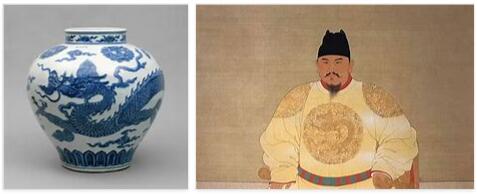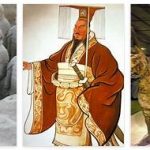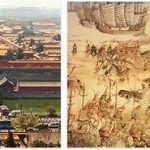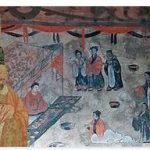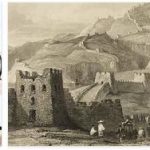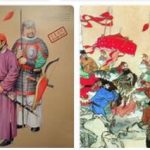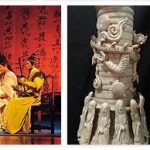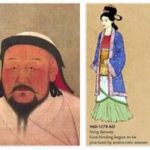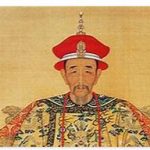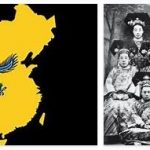With Zhu Yuanzhang, the despotic absolutism of the Chinese empire began, which has decisively shaped the image of China in the West. He eliminated the one and a half millennia old institution of the chancellor as head of the bureaucracy; all central and provincial authorities were directly subordinate to him. He was supported by a few secretaries, the “Inner Cabinet” (Neige, Nei-ko), which later grew to 30 members. Politically disempowered and degraded to mere executive organs, the officials also lost legal privileges. Even with minor misconduct or contradiction, they risked humiliating bastonads or even execution. The instrument of this regime was that of Taizu “Brocade Uniform Guard” created to monitor and discipline the civil service and have unlimited powers. From the mid-15th century onwards, the influence of civil servants on politics was further restricted by eunuchs, who ultimately even controlled the decisions of the Inner Cabinet. Violent factional battles within the civil service favored this development.
On the other hand, under the Ming, the civil mandarin, the professional civil servant from the landed class selected through a state examination, finally prevailed. The public school system was greatly expanded. The teaching and examination contents of the civil servant training were now the Confucian classics in the interpretation of the school of Zhu Xi . Hand in hand with this, Buddhism and Daoism were pushed into popular culture. Restrained by the shackles of Confucian orthodoxy, the intellectual and artistic achievements were not very original – the Ming period, like the following Qing dynasty (Ch’ing dynasty), was an encyclopedic epoch in which the tradition was processed and passed on. Only the “bourgeois” culture of the cities that had emerged during the Song era was alive. Urbanization continued thanks to a growing middle class of wealthy merchants who increasingly joined the educated elite. About half a dozen cities in the Ming period are thought to have had between 100,000 and 1 million residents.
The flourishing economy was still based on rice- based agriculture, but it was now supported by those from the New World Field crops such as potatoes, corn and peanuts reached China were supplemented so that a rapidly growing population could be fed. At the beginning (end of the 14th century) the Mingreich comprised about 85 million residents, a hundred years later already 155 million, another hundred years later over 230 million. a. benefit the north, which has been devastated and depopulated for centuries. The north-south migration of the population, which has been observed for almost a millennium, has now been reversed, sponsored by the government, without the south losing its economic supremacy. The development of the north was also favored by the relocation of the imperial residence from Nanjing to Beijing (1421), a measure that the Emperor Chengzu (Ch’eng-tsu) or Yongle (Yung-lo, 1402–24) to combat the Mongol threat. Meanwhile, neither campaigns in Mongolia nor the rebuilding of the Great Wall of China could avert the danger from the north.
Emperor Yingzong (Ying-tsung, 1435–49 and 1457–64) even got into Mongolian captivity in 1449, from which he was only released after paying a ransom. The forays into southwest China and North Vietnam were more successful, as were diplomatic relations with Korea. The boldest ventures, however, were the seven sea voyages undertaken between 1405 and 1433 under the command of the eunuch Zheng He (Cheng Ho), the twenty to thirty thousand Chinese on hundreds of ships as far as East Africa and the Red Sea brought. The reasons for these ventures, during which not an inch of land was taken, are not entirely clear. Their abrupt end is occasionally explained by the high costs and military requirements of the fight against the Mongols. But China, a country located in Asia according to computergees.com, probably had no interest in building a maritime empire.
A ban on private overseas trade at the end of these expeditions led to conflicts with Japan. At the end of the 16th century, the Ming army found it difficult to repel a Japanese invasion of Korea. The ships of the Portuguese (1514), Spaniards (1575), Dutch (1601) and English (1636) entering southern Chinese ports were also affected by the trade restrictions. Despite this closure policy, thanks to the adaptable tactics of the Jesuit Matteo Ricci the Catholic Church has regained a foothold in China since 1601. However, she failed in her missionary efforts in the 18th century, not only because of the “unteachability” of the Chinese elite, but also because of the dogmatism of the Holy See, which refused to tolerate concessions to Chinese forms of thought and belief. The dynasty, weakened by a divided civil service and the arbitrariness of the eunuchs, was overthrown by a popular uprising led by Li Zicheng (Li Tzu-ch’eng, * 1605, † 1645). When Beijing fell in 1644, the emperor committed suicide.
